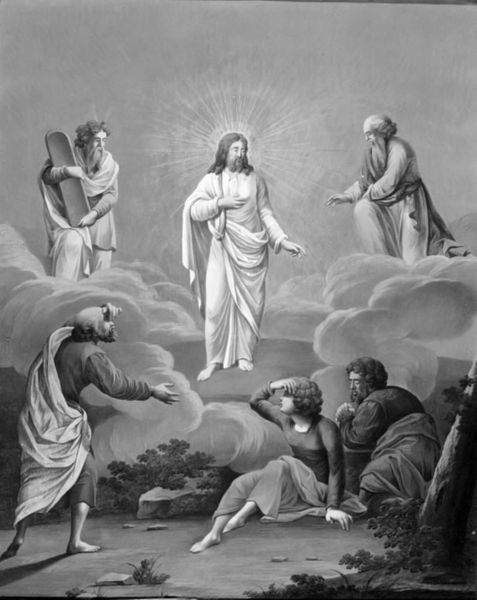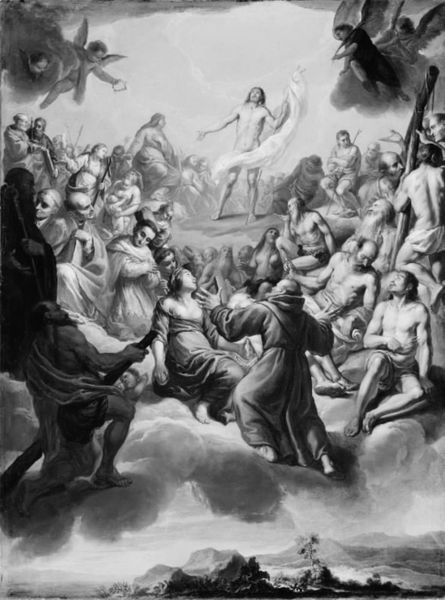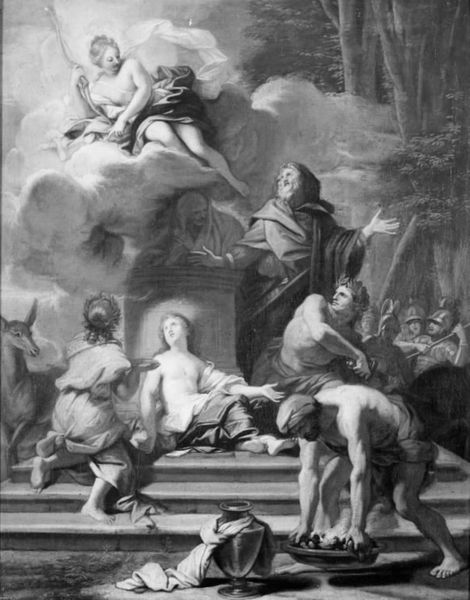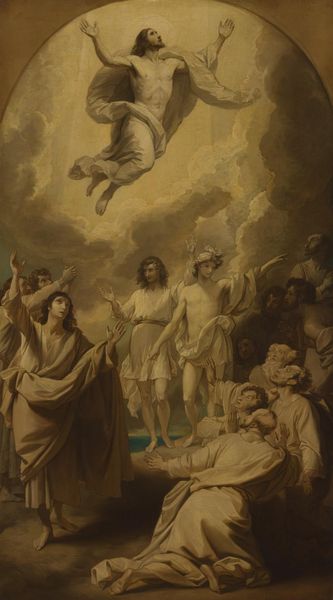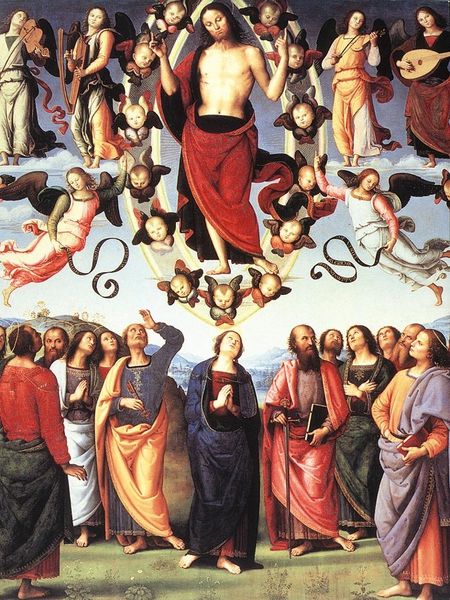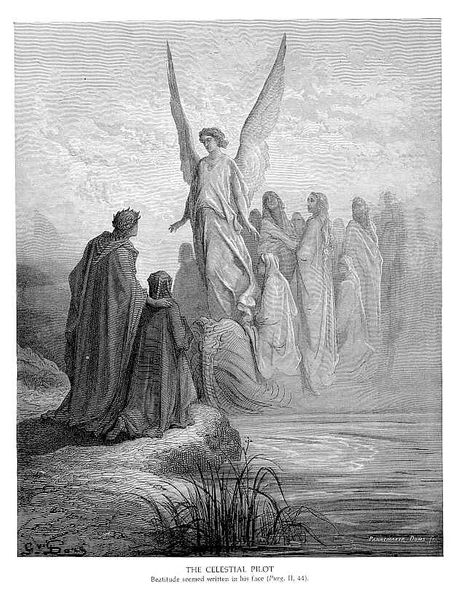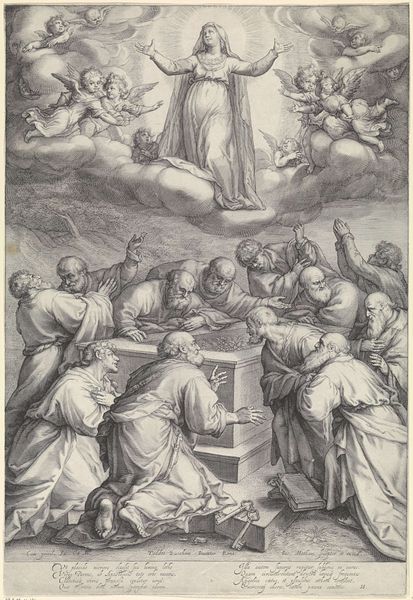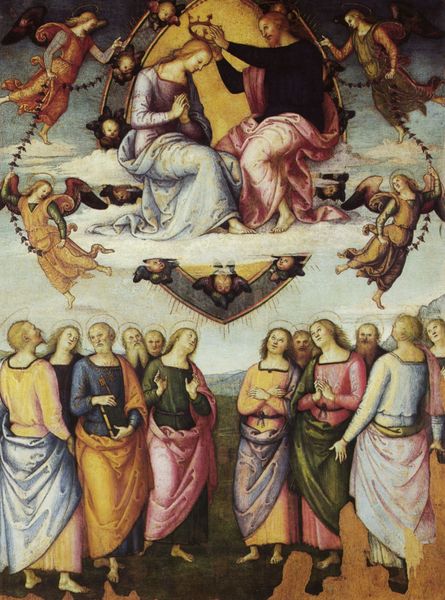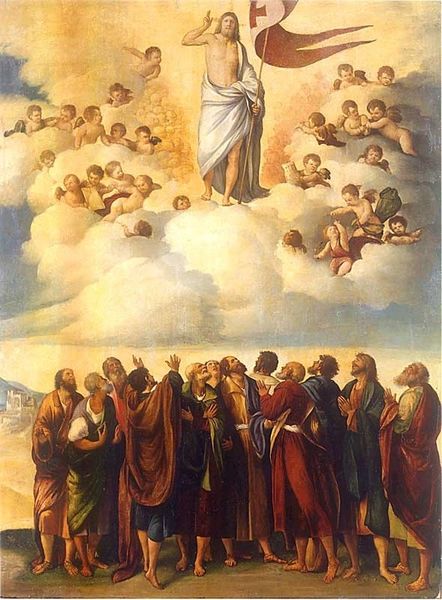
drawing, tempera, gouache, paper, ink
#
drawing
#
narrative-art
#
tempera
#
neoclassicism
#
gouache
#
charcoal drawing
#
paper
#
ink
#
genre-painting
#
history-painting
#
academic-art
Dimensions: 340 mm (height) x 260 mm (width) (bladmaal)
Editor: Here we have W.A. Müller's "Kristi himmelfart," created sometime between 1748 and 1816. It appears to be a drawing rendered in tempera, gouache, ink and charcoal on paper. It depicts Jesus ascending into the heavens, observed by a group of figures. The overall impression is quite solemn. What do you see in this piece, particularly regarding its historical context? Curator: What strikes me is how this Neoclassical piece engages with themes of power, both divine and earthly. Think about the era it was produced in. Neoclassicism often served as a visual language for revolutionary and imperial ambitions. So how might we interpret this image of ascension not just as a religious scene, but also as a commentary on hierarchical structures and the promise, or perhaps the illusion, of upward mobility? How does it participate in existing power structures? Editor: So, even a seemingly straightforward religious depiction can be interpreted through a lens of social and political power dynamics? Curator: Precisely. Consider the gazes of the people below. Are they filled with awe, or are they witnessing something inherently unattainable? The very act of looking up reinforces a social stratification. It asks us to consider the artist’s own position within these structures, and what this image might have meant to viewers then versus its meaning today. The black-and-white drawing could also be a critique of the Church, the lack of color potentially hinting at the austere reality and limitations experienced on Earth. Editor: That’s fascinating. I hadn’t considered the role of Neoclassicism in reflecting and reinforcing social hierarchies. This has completely changed my perception of the drawing. Curator: Art is never created in a vacuum. Engaging with these layers enriches our understanding of both the artwork and the world it inhabits.
Comments
No comments
Be the first to comment and join the conversation on the ultimate creative platform.

